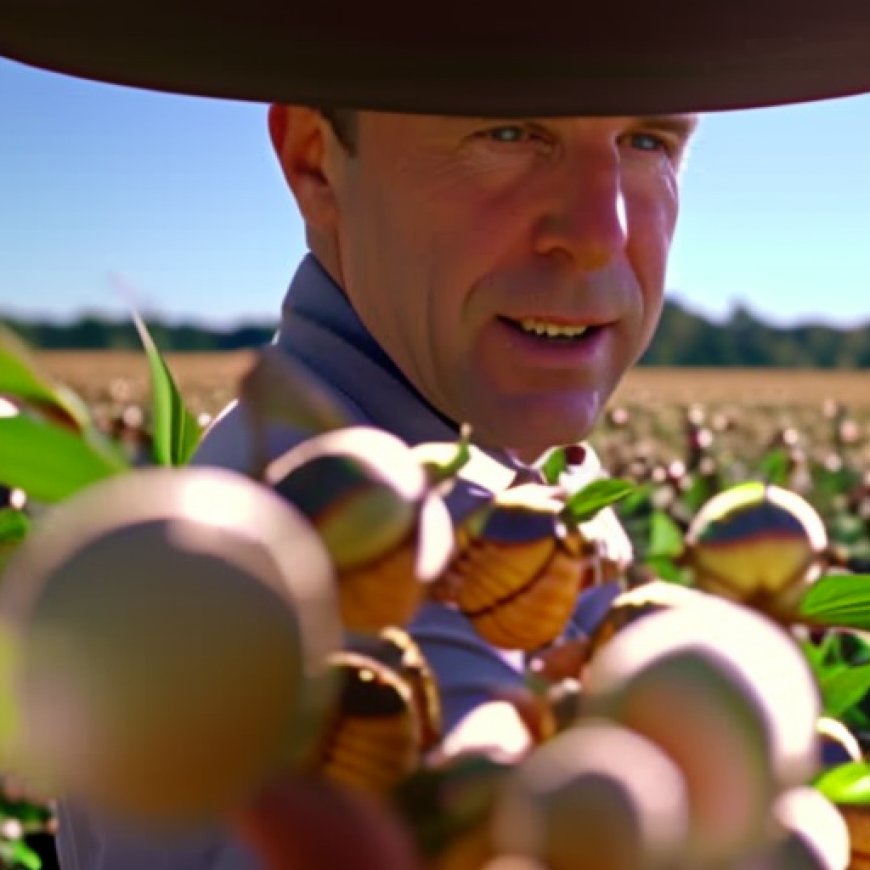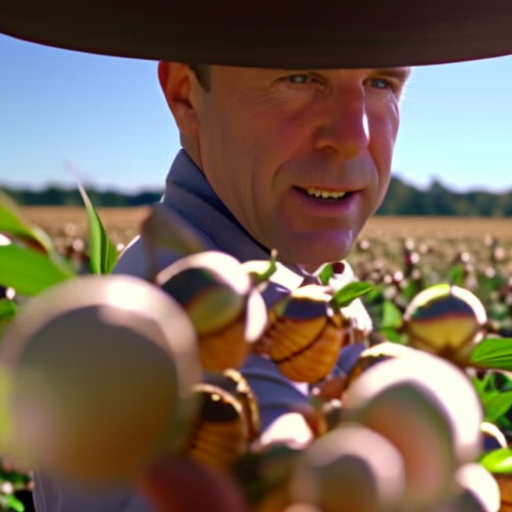Researchers develop ‘breakthrough’ technology to eradicate crop-destroying pests: ‘Will contribute a lot to agricultural productivity and farmers’ income’
Researchers develop 'breakthrough' technology to eradicate crop-destroying pests: 'Will contribute a lot to agricultural ... The Cool Down


Researchers develop ‘breakthrough’ technology to eradicate crop-destroying pests
Researchers in Korea have developed a breakthrough technology to eradicate pests without using pesticides. The radiator invention will help protect farms from soil disease and eliminate the side effects that come with the use of dangerous chemicals, which can harm agricultural ecosystems, lead to pesticide resistance, and leave behind toxic residues.
Maximizing the Penetration of Microwaves
- Previous research showed microwave heating for soil remediation penetrated only 10 centimeters into the ground, so its success was limited to applications such as weed control.
- Dr. Sunshin Jung and a team at the Korea Electrotechnology Research Institute maximized the penetration of microwaves by adjusting their spatial distribution and increasing or decreasing the wavelength and phase as desired.
- The breakthrough was preceded by years of research on the properties of microwaves.
Effective Treatment with Proprietary Antenna
- The proprietary antenna produces microwaves that can surpass a depth of 30 cm by increasing their amplitude, which determines the power of the waves, when they meet and overlap at a specific point underground.
- The antenna can heat moisture in the soil from 60 to 100 degrees Celsius, resulting in a long-lasting, effective treatment.
This technology helps to kill pests residing underground after harvest without the use of pesticides, their side effects and environmental pollution, and will contribute a lot to agricultural productivity and farmers’ income.
Partnerships and Benefits
In addition to Jung and Co., South Korea’s Animal and Plant Quarantine Agency and Jooeun Care Farm Co., Ltd., had a hand in the development. Farmers will be able to rent the equipment at affordable prices, thanks to local government and public institution partnerships. It could be especially helpful in reducing a major concern of monoculture farmers, as soil diseases caused by pests reduce crop yield and quality.
Contributing to Sustainable Development Goals
- This breakthrough technology aligns with several Sustainable Development Goals (SDGs), including:
- Goal 2: Zero Hunger – By eradicating pests without the use of pesticides, this technology helps ensure food security.
- Goal 3: Good Health and Well-being – By reducing the use of dangerous chemicals, this technology protects public health.
- Goal 12: Responsible Consumption and Production – By eliminating the need for pollution-causing pesticides, this technology promotes sustainable agricultural practices.
- Goal 15: Life on Land – By eradicating invasive species and protecting agricultural ecosystems, this technology contributes to biodiversity conservation.
Potential Applications
The radiator technology could also be applied to solve other problems, including eradicating invasive species such as termites and red fire ants, cleaning oil-contaminated soil, and melting black ice on roads.
Conclusion
This breakthrough technology offers a promising solution to eradicate crop-destroying pests without the use of harmful pesticides. By addressing the negative impacts of pesticide use on agricultural ecosystems and public health, this technology contributes to the achievement of several Sustainable Development Goals. Furthermore, its potential applications extend beyond pest control, offering solutions to various environmental challenges.
SDGs, Targets, and Indicators
-
SDG 2: Zero Hunger
- Target 2.4: By 2030, ensure sustainable food production systems and implement resilient agricultural practices that increase productivity and production, that help maintain ecosystems, that strengthen capacity for adaptation to climate change, extreme weather, drought, flooding, and other disasters, and that progressively improve land and soil quality.
- Indicator 2.4.1: Proportion of agricultural area under productive and sustainable agriculture
- Indicator 2.4.2: Proportion of total agricultural population with ownership or secure rights over agricultural land, by sex; and Indicator 2.4.3: Average income of small-scale food producers, by sex and indigenous status
-
SDG 3: Good Health and Well-being
- Target 3.9: By 2030, substantially reduce the number of deaths and illnesses from hazardous chemicals and air, water, and soil pollution and contamination
- Indicator 3.9.1: Mortality rate attributed to household and ambient air pollution
- Indicator 3.9.2: Mortality rate attributed to unsafe water, unsafe sanitation, and lack of hygiene (exposure to unsafe Water, Sanitation, and Hygiene for All (WASH) services)
-
SDG 12: Responsible Consumption and Production
- Target 12.4: By 2020, achieve the environmentally sound management of chemicals and all wastes throughout their life cycle, in accordance with agreed international frameworks, and significantly reduce their release to air, water, and soil to minimize their adverse impacts on human health and the environment
- Indicator 12.4.1: Number of parties to international multilateral environmental agreements on hazardous waste, and other chemicals that meet their commitments and obligations in transmitting information as required by each relevant agreement
- Indicator 12.4.2: Hazardous waste generated per capita and proportion of hazardous waste treated, by type of treatment
Table: SDGs, Targets, and Indicators
| SDGs | Targets | Indicators |
|---|---|---|
| SDG 2: Zero Hunger | Target 2.4: By 2030, ensure sustainable food production systems and implement resilient agricultural practices that increase productivity and production, that help maintain ecosystems, that strengthen capacity for adaptation to climate change, extreme weather, drought, flooding, and other disasters, and that progressively improve land and soil quality. | Indicator 2.4.1: Proportion of agricultural area under productive and sustainable agriculture Indicator 2.4.2: Proportion of total agricultural population with ownership or secure rights over agricultural land, by sex; and Indicator 2.4.3: Average income of small-scale food producers, by sex and indigenous status |
| SDG 3: Good Health and Well-being | Target 3.9: By 2030, substantially reduce the number of deaths and illnesses from hazardous chemicals and air, water, and soil pollution and contamination | Indicator 3.9.1: Mortality rate attributed to household and ambient air pollution Indicator 3.9.2: Mortality rate attributed to unsafe water, unsafe sanitation, and lack of hygiene (exposure to unsafe Water, Sanitation, and Hygiene for All (WASH) services) |
| SDG 12: Responsible Consumption and Production | Target 12.4: By 2020, achieve the environmentally sound management of chemicals and all wastes throughout their life cycle, in accordance with agreed international frameworks, and significantly reduce their release to air, water, and soil to minimize their adverse impacts on human health and the environment | Indicator 12.4.1: Number of parties to international multilateral environmental agreements on hazardous waste, and other chemicals that meet their commitments and obligations in transmitting information as required by each relevant agreement Indicator 12.4.2: Hazardous waste generated per capita and proportion of hazardous waste treated, by type of treatment |
Analysis
-
SDG 2: Zero Hunger
The article highlights the development of a technology that helps protect farms from soil disease and eliminate the side effects of using dangerous chemicals. This technology can contribute to sustainable food production systems and resilient agricultural practices, as it increases productivity, maintains ecosystems, and improves land and soil quality.
The targets under SDG 2 that can be identified are Target 2.4, which focuses on sustainable food production systems and resilient agricultural practices, and the corresponding indicators are Indicator 2.4.1, Indicator 2.4.2, and Indicator 2.4.3.
-
SDG 3: Good Health and Well-being
The article mentions that the technology helps eliminate the use of pesticides, which can be hazardous to human health. By reducing the need for pollution-causing pesticides, the technology contributes to reducing deaths and illnesses from hazardous chemicals and soil pollution.
The target under SDG 3 that can be identified is Target 3.9, which focuses on reducing deaths and illnesses from hazardous chemicals and air, water, and soil pollution and contamination. The corresponding indicators are Indicator 3.9.1 and Indicator 3.9.2.
-
SDG 12: Responsible Consumption and Production
The article emphasizes the use of the technology to eradicate pests without using pesticides, which aligns with the goal of achieving environmentally sound management of chemicals and reducing their release to air, water, and soil.
The target under SDG 12 that can be identified is Target 12.4, which focuses on achieving environmentally sound management of chemicals and wastes. The corresponding indicators are Indicator 12.4.1 and Indicator 12.4.2.
Behold! This splendid article springs forth from the wellspring of knowledge, shaped by a wondrous proprietary AI technology that delved into a vast ocean of data, illuminating the path towards the Sustainable Development Goals. Remember that all rights are reserved by SDG Investors LLC, empowering us to champion progress together.
Source: thecooldown.com

Join us, as fellow seekers of change, on a transformative journey at https://sdgtalks.ai/welcome, where you can become a member and actively contribute to shaping a brighter future.







